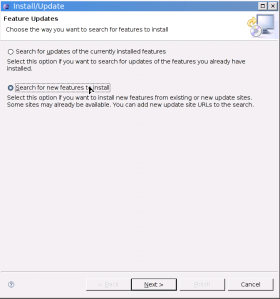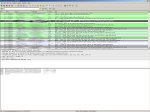
This is a mini-guide to setup Mirth as an eclipse project, in order to adapt some classes, build it from sources or explore the sources to learn how mirth is built. In fact, this is an enhanced version of my previous guide found in the wiki section of Mirth site. This new version has many screenshots of the configuration to provide an easier guide, and is adapted where needed to Mirth v1.8.1
Required software
To start the setup of eclipse project I’ll assume you have installed and configured:
- Sun JDK 1.5 from sun, download it from http://java.sun.com
- Eclipse 3.X, download it from http://www.eclipse.org/downloads/
- Subclipse plugin, to allow checkout sources from Mirth SVN Repository. http://subclipse.tigris.org/
- Launch4j, http://launch4j.sourceforge.net/
You can install the appropiate version of subclipse from eclipse. You should go to Help item in eclipse menu, “Software Updates”, “Find and Install”:
“Search for new features to install”, and define a new repository location. Provide the appropiate URL to you eclipse version:




 Mirth JDBC reader/writer are well suited for simplest cases: only one SELECT and (optionally) a UPDATE for each row, but normally you need to use JDBC reader/writer with JS enabled.
Mirth JDBC reader/writer are well suited for simplest cases: only one SELECT and (optionally) a UPDATE for each row, but normally you need to use JDBC reader/writer with JS enabled.





